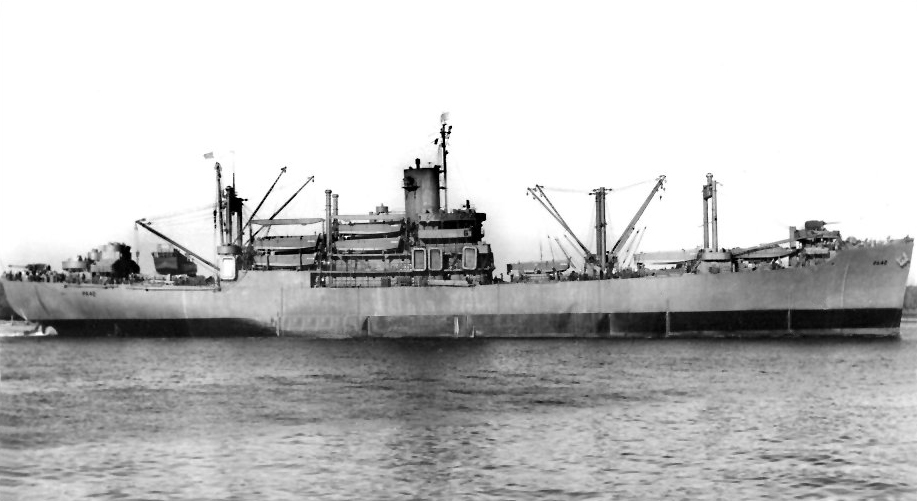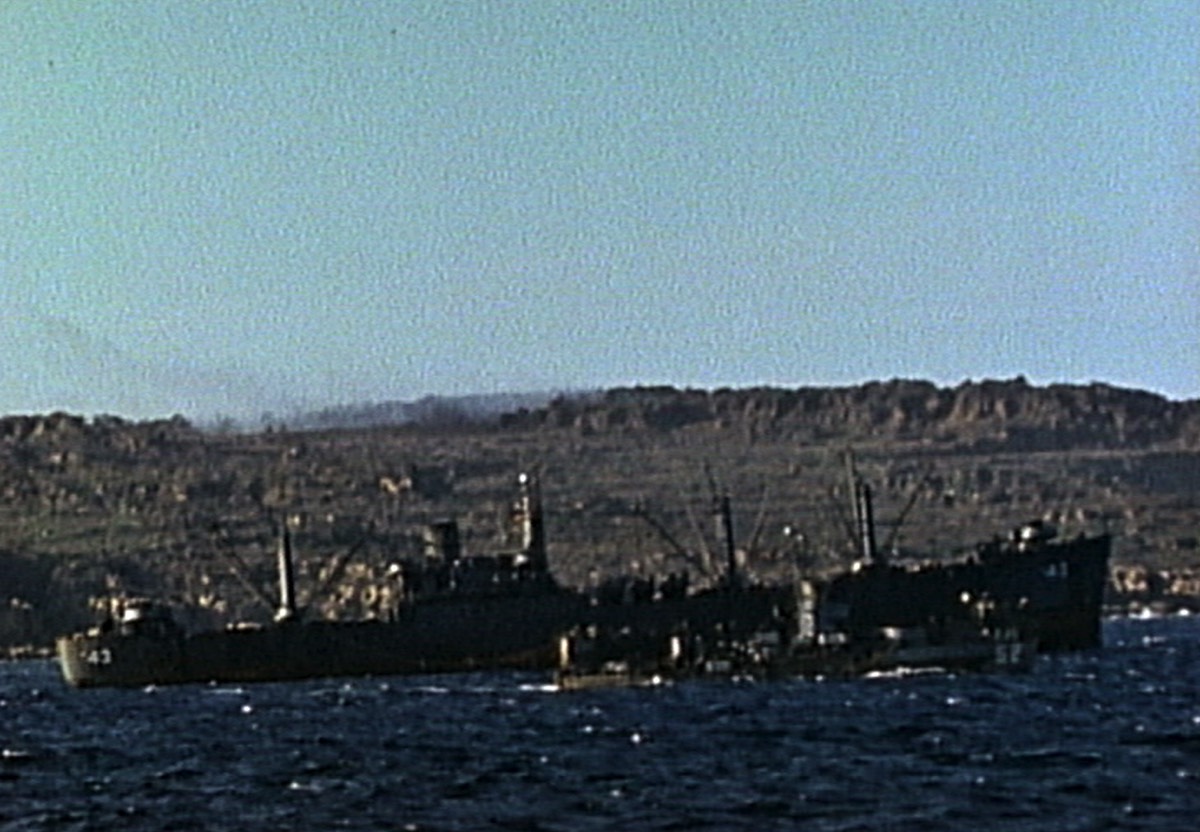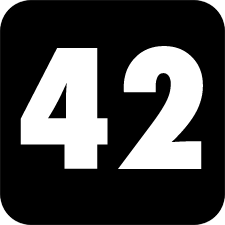USS Elmore

- home Home
- flag Start Here
- Featured Section
- What's New?
- The Inside Story
- Dedication
- Stories
- Bulletin Board
- Web Tech
- Team Elmore
- Contact Us
- The Ship
- 42 Overview
- What Is an APA?
- APA Classes
- APAs
- Higgins Boat
- Blueprints
- Perspectives
- Modern Amphibs
- Weapons
- GE Turbine
- Elmore Post-War
- people The Crew
- Remembrance
- Survivors
- Crew List
- Officer List
- Passengers
- Crew Photos
- Shipboard
- Memorabila
- Recollections
- Reunions
- The Logs
- Battle Stars
- Timelines
- War Diary
- Deck Logs
- Ship's History
- Life Aboard a Transport
- Nice to Have You Aboard
- The War Effort
- Pacific Fleet
- Admirals
- Nimitz
- Halsey
- Turner
- MacArthur
- MacArthur Biography
- Man of the People
- The Truth Behind the Photograph
- MacArthur's Navy
- MacArthur Mini-Bio
- Marines
- Army
- Homefront
- Magic Carpet
- The Pacific War
- Overview
- Strategy
- Pacific War
- Pacific Islands
- Ulithi
- Guam
- Tokyo Rose
- Magic
- Kamikaze Main
- Suicide Squad
- Ten Facts
- Divine Wind
- Baka
- USS DuPage
- USS LaGrange
- The Atomic Bomb
- Graphical View
- A-Bomb Timeline
- The Bomb
- Bombs Compared
- Justified?
- Surrender
- Occupation
- Matsuyama
- Wakayama
- Commentaries
- Joe Rosenthal
- Maps
- Maps 1
- Maps 2
- Photos
- Ship Photos
- War Photos
- Videos
- Video 1
- Video 2
- Video 3
- Video 4
- Resources
- Recommended Books
- Book List 1
- Book List 2
- Book List 3
- Book List 4
- Book List 5
- Book List 6
- Book List 7
- Book List 8
- All Hands
- All Hands 1942
- All Hands 1943
- All Hands 1944
- All Hands 1945
- All Hands 1946
- War Posters
- Museums
- Other Websites
- search Search
- question_answer Contact Us


Ship Photos


The classic shot of USS Elmore (APA-42), a Bayfield-class attack transport. Her eight battle stars were more than any other Bayfield-class or Haskell-class ship (the vast bulk of the APAs) earned during the war.
USS Elmore (APA-42) Photos
During the war, there was little time for taking photo shots of war ships. The few that were taken were labeled "classified" and stored away for years. No color photos of USS Elmore exist, except for the one below taken from a video clip. The stunning color photos you see on this website are photo compositions – in other words, photoshopped. All photos of Elmore on this page are authentic.

USS Elmore at Okinawa
This is a licensed still frame from a short film clip held in the Critical Past video library. The Elmore appears for about 5 seconds. The accompanying text reads as follows:
Rocky coast of Okinawa seen from a vessel close in during U.S. attacks on Okinawa, in World War 2. A shell or bomb bursts slightly inland. What appears to be a Landing Craft, Vehicle, Personnel, LCVP (Higgins boat) sitting still in water. U.S. dive bombers attacking inland. Attack Transport USS Elmore (APA-42) close to shore. A U.S. submarine moves near the Elmore's starboard side. Heavy Cruiser, USS Salt Lake City (CA-25) headed away from the shore. Black smoke and white smoke billowing from Japanese targets burning inland after strikes by U.S. Dive bombers. Continued pounding by dive bombers.
The Real Story
The location of this photo has been verified as just off the coast of Okinawa. This is where the final battle of the war occurred. While the video clip from 1945 is a bit grainy, you can see a smaller ship to starboard of USS Elmore (APA-42), appearing to be not 50 yards apart, with the hull number “52”.
Team Elmore is in debt for the assistance of historian/author Gary Burns for his insights. Among a number of other historical books, Gary is the author of “Shipmates: The Men of LCS 52 in World War II.” In other words, he is the ship’s historian. What luck for us! No better source could be had in this instance.
The Landing Craft, Support (Large) was an amphibious warfare vessel used by the United States Navy in the Pacific during World War II. LSC 52 was a member of this class of gunboats known as “mighty midgets.” LCS 52 carried an arsenal equal to ships twice its size. Yet its shallow draft enabled it to maneuver to within a few hundred feet of any beach.
The LCS(L) ships provided more firepower per ton than any ship ever built for the U.S. Navy. Three guns and 10 rocket launchers were the main armaments. The bow gun was a 3"/50 caliber gun, a single 40 mm gun or a twin 40 mm gun. The forward and aft deck guns were twin 40 mm gun. The 10 Mark 7 rocket launchers were situated behind the bow gun and forward of the deck house. Four 20 mm cannons were also mounted.
In short, the LSCs provided fire support for the APA’s landing boats. As Elmore disembarked Marines into Higgins boats, LCS 52 was there to protect those boats from enemy shore embankments on Okinawa. After providing close-in support during the landings at Okinawa, many Landing Craft Support ships were placed on the radar picket stations as anti-aircraft platforms. When not on a picket stations, the ship would create smoke to hide the fleet at anchor and perform "skunk patrol" screening for suicide boats.
According to Gary Burns:
That is certainly Okinawa and probably just after the initial landing. Maybe late 1 April 1945. Why? The 52 was part of the demonstration (fake landing) flotilla that provided support fire for the 2nd Marine Division that sallied out in landing craft but turned back before hitting the beach. The 52 went into harbor at Nakagusuku-wan (later called Buckner Bay) that night. It is hard to tell for sure, but judging from the time of day, the planes already hitting targets, I would say that this is LCS 52 performing patrol duties after the demonstration on L-Day.
It should be noted that one of the other ships present in Buckner Bay that day was the USS Alpine (APA-92), a Bayfield-class APA and sister ship of Elmore. It was here at Okinawa that the full weight of the Japanese kamikaze attacks was suffered.
On 1 April, Alpine began lowering her boats. At 1908, a Japanese plane approached Alpine from the port quarter. At 1910, she took a bomb hit on the starboard side of her main deck. The plane itself then hit the ship, causing fires in the number 2 and 3 holds. By 2200, the transport was listing seven degrees to port. Another ship came alongside and assisted Alpine's firefighting efforts, and, by 2300, the fires were under control. The crew then began their search for casualties and discovered that 16 men had been killed, and 19 were injured.
Alpine suffered the same kamikaze fate as one of Elmore’s other sister ships, USS DuPage (APA-41). Once again, USS Elmore proved to be a lucky ship.
———————————
Special thanks to:
Gary Burns
https://gohistorygateway.com
Historian/Author
Retired Master Gunnery Sergeant of Marines
Retired Texas Master Peace Officer
USS Elmore at Okinawa
1 April 1945
USS Elmore sailed from Leyte (Philippines) on 27 March 1945 for the invasion of Okinawa on 1 April. Four days after the assault she carried casualties to Guam. This was to be the final battle of WWII in the Pacific.
Click on ship photo for full story.

